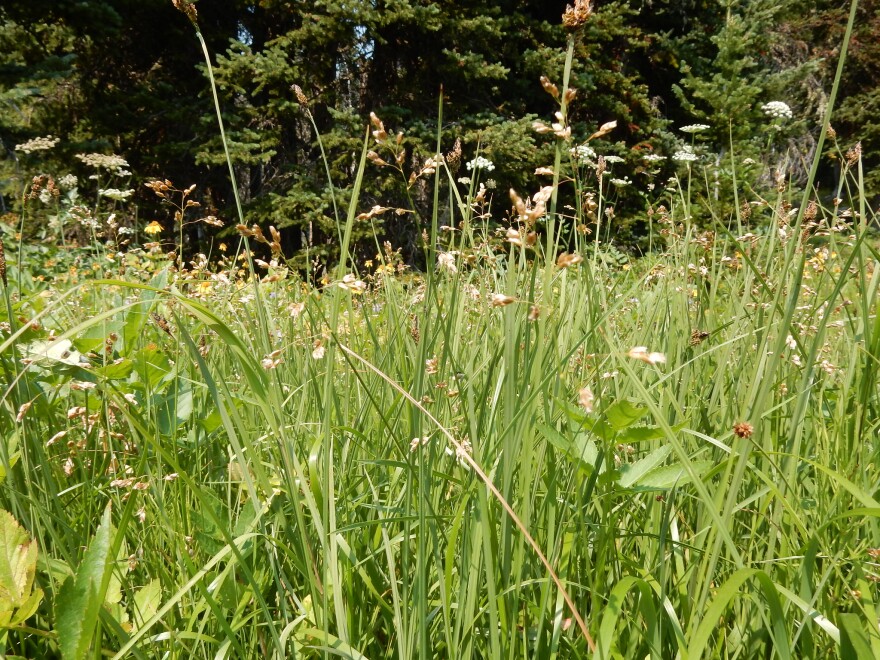I recently read about the Natural Resource Conservation Service’s Turtle Mountain Conservation Delivery Unit and Plant Materials Center collaborating to provide interested tribal members information on how to grow sweetgrass in their gardens.
Some of you, no doubt, have heard about the New York Times bestseller Braiding Sweetgrass by Robin Wall Kimmerer. So, what is sweetgrass?
Sweetgrass
Sweetgrass is also known as vanilla grass. Botanists also know the plant by its scientific name Hierochloe odorata, but recently it has been renamed Hierochloe hirta.
Sweetgrass ranges over much of western and northeastern North America. It is a plant of low prairies, wet meadows, and the edges of marshes and sloughs, particularly where soils are sandy. It grows to perhaps two feet tall, produces an open pyramidal shaped panicle with large golden-brown florets, and spreads by creeping rhizomes.
Sacred Plant
Most North Dakotans are perhaps faintly familiar with this plant. However, sweetgrass is a sacred plant to many Native Americans. The stems and leaves were, and still are, often braided and burned in smudging and other ceremonies to bring the benevolent spirits.
The sweet scent of sweetgrass is similar to that of vanilla and comes from coumarin, which is found in some other plants including sweet clover. As some of you may know, coumarin and related compounds are known for having anticoagulant properties and are used in modern medicine to reduce the chance of blood clots.
Finding Sweetgrass
The abundance of sweetgrass may be considered infrequent-to-frequent in the state. But finding it can often be rather difficult.
Several years ago, I was visiting with an elder of the Turtle Mountain Band of Chippewa, and I mentioned to her that I often have difficulty spotting it. Her response was interesting and indicated the spiritual significance of the plant: “It does not reveal itself easily,” she informed me. "You must be worthy for the plant to reveal itself.”
Further Reading
- Sweetgrass (The Canadian Encyclopedia)
- Sweetgrass Collection, Propagation, and Harvest (USDA, NRCS., Michigan Technical Note)
- Gilmore, Melvin R. 1977. Uses of Plants by the Indians of the Missouri River Region. University of Nebraska Press. 123 pages.
- Kimmerer, Robin Wall. 2013. Braiding Sweetgrass—Indigenous Wisdom, Scientific Knowledge and the Teachings of Plants. Milkweed Editions. 391 pages.





